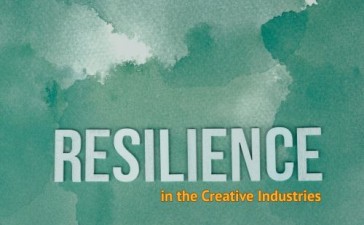The backbone of every successful business by far is finance. Without enough financial support, a business is most likely to go bankrupt. There are many ways a business can acquire finance. Examples include selling out un-necessary fixed assets, attracting investors, etc. One of the most popular examples includes acquiring finance through loans. Loans are defined as borrowing a sum of money from a source such as commercial banks. This sum of money has to be returned with an interest amount that is a fixed percentage set before borrowing takes place.
The main distinguishing factor between loans is them being secured or unsecured business loans. Now the question is, what do we mean by the “security” of loans? Are not all loans safe? Not really, and we will tell you the differences between un-secure and secure business loans. Secure business loans can be defined as loans by which you give your lender some form of assurance that you will certainly pay back the amount.
You can gain the trust of your lender by some personal guarantee or some valuable fixed asset. These are many common within small businesses. On the other hand, unsecured business loans are defined as a loan that does not require any assurance from the borrower. The lender decides to either give the loan or not solely based upon the creditworthiness of the borrower. This can be done using “credit scores”.
Generally, people will see good credit history and high incomes are approved for unsecured loans/ Other than credit cards; these types of unsecured loans are not popular elsewhere in the business sector. Following are some key differences between secured and unsecured loans:
- Percentage of interest rates
In the case of secured loans, interest rates tend to be lower as compared to the ones in unsecured loans. This is because the lender should have some return on risking high amounts of payments without any security. The average interest on credit cards ranges from 15-18%. This can be a relatively high amount to pay back when you have spent more than you should have. Lenders have a financial incentive in this process, and hence they want to earn higher so in the case of unsecured loans, even if interest rates are low, the amount of loan will tend to be higher which will increase the financial incentive received.
- Time for qualifying
The processing time of a secured loan can be higher as compared to an unsecured loan. This is because assets such as cars, homes, etc. take time to be validated, and all the necessary documentation takes time to be done. Lenders generally tend to inquire more about a borrower’s income and financial conditions before issuing the loan. In the case of unsecured loans, there is no necessary documentation to be made, and hence transactions performed through it are generally quicker.
- The difference in repayment schedules
Repayment schedules refer to the amount of time a lender allows the borrower to repay his loan. In the case of secured loans, the repayment time tends to be higher as compared to the one in unsecured loans. As in the case of unsecured loans, lenders need their money back in a relatively short period; hence the borrower is at a disadvantage.
The people with secured loans are at a significant advantage at this point as even if they have some unforeseen circumstances, they will have sufficient time to figure their way out and repay their loan without facing any great losses. The opposite case is for the ones with unsecured loans as they may enjoy a short term benefit, but sadly the long term does not exist for them due to the unavailability of the lender increasing the repayment time.
- Collateral backing
Collateral backing is an asset that the lender offers as a security for the amount of loan he requires. In the case of secured loans, borrowers need to back up their financial situation by assets such as houses, motor vehicles, land, etc. For unsecured loans, nothing of this sort needs to be done which leads the borrower tension free in his decision making, and this is partially good for the borrower as now he can worry about other things such as expanding his business or acquiring more workers and stuff like that.
- The difference in the amount of risk generated
The risk, also called the counterparty risk, to the lender tends to be low in the case of secured loans while the latter happens in the case of unsecured loans. While this is pretty understandable, bad debts may rarely occur in secured loans too due to some reasons that were not accounted for. Even in this case, the lender is not at a disadvantage as he has some backup available from the borrower.
- Differences in borrowing limits
Lenders often allow higher borrowing amounts in the case of secured loans while lower amounts are offered in the case of unsecured ones. This is because the lenders do not have a sensation of fear amongst them that even if they give a high amount, there is a certainty that they will get their amount back and even if they do not get the amount back they do have some financial backup ready, so they are not really at a loss.
Moreover, by providing higher amounts, they are at a relative advantage as the return on their investment in the form of interest will tend to be higher on higher loan amounts. The same is not the case for unsecured loans as even if they would get a higher return on higher amounts; lenders do not want to take a risk by providing those amounts. That is why certain banks now have introduced the limit at which people can use credit cards in a month due to many banks experiencing people not paying their credit back due to many reasons.
Pros and Cons
Both of these types of loans have their advantages and disadvantages. Policies also differ from commercial banks from country to country, and so do the interest rates depending upon the fiscal and monetary government macroeconomic policies of the country. People should make a rational decision that either do they want to experience lower interest rates and put their property or fixed assets at risk or they want to experience relatively higher interest rates with almost nothing at risk.
In this scenario, both the lender and the borrower have to make their own decision, so it is better to weigh out all the costs and benefits that concern you and then make a decision. Keep in mind the size of your business, the type of expansion you want and the sources you have to back up your decision. If you have a relatively good credit score, then you should go for an unsecured loan and put nothing on risk from your side.
Conclusion
It is important not to bluff the other person as this relationship is meant to be both about your professionalism and morality. Remember your moral values in every step of your life because those are the building blocks that will stay with you throughout in decision making such as this for loans and further in the days to come!
Want to learn more?
- Just starting out? CLICK HERE
- Been working in your business for two years or more? CLICK HERE
We’re here to help you to take action just like we’ve helped thousands of other entrepreneurs, business owers and creative professionals all around the globe.
Now is the time to let your passion SHINE.
Now is the time to Make Tomorrow Today!
To your success,
Vinh Van Lam & Stuart Horrex
Your Coaches ArtSHINE industries





